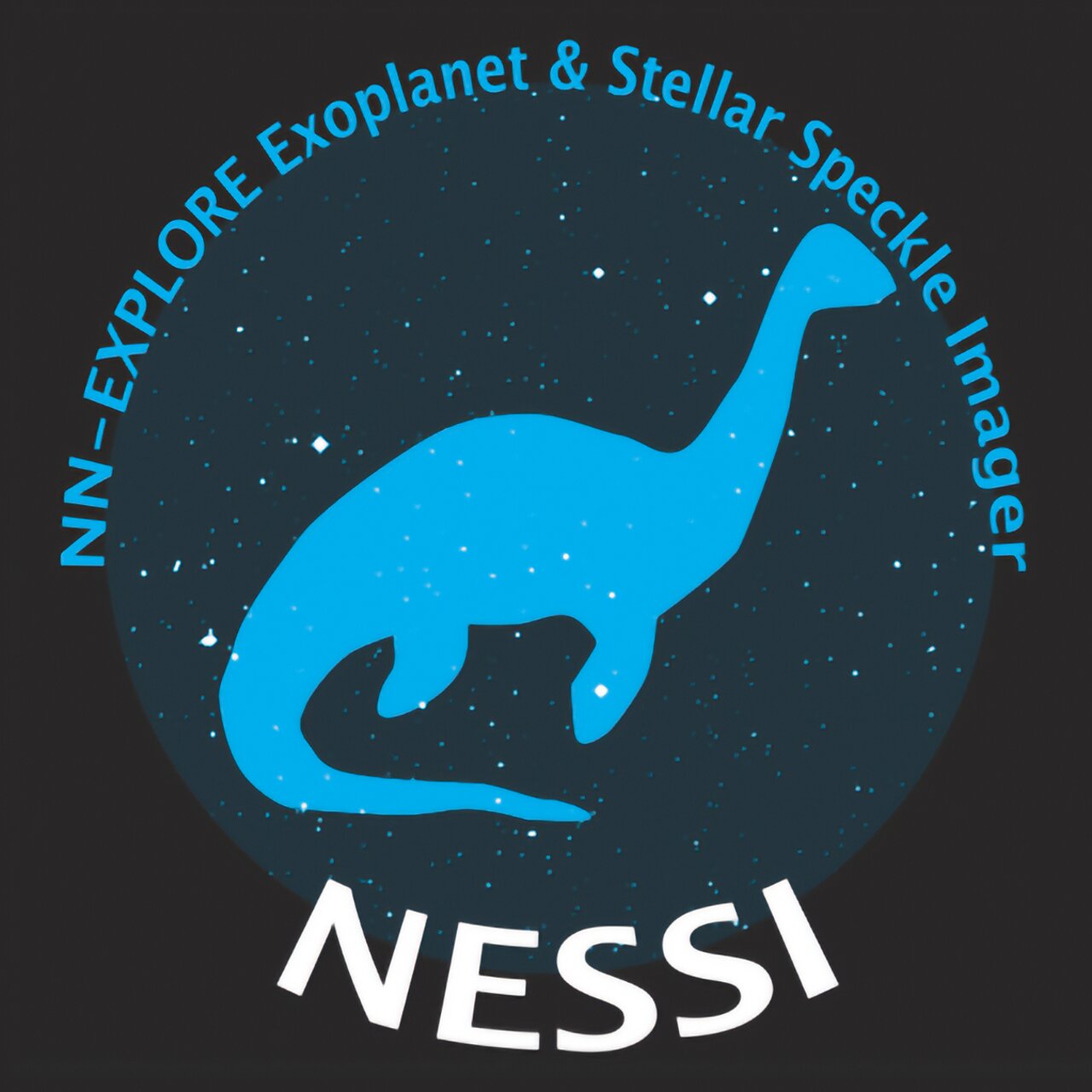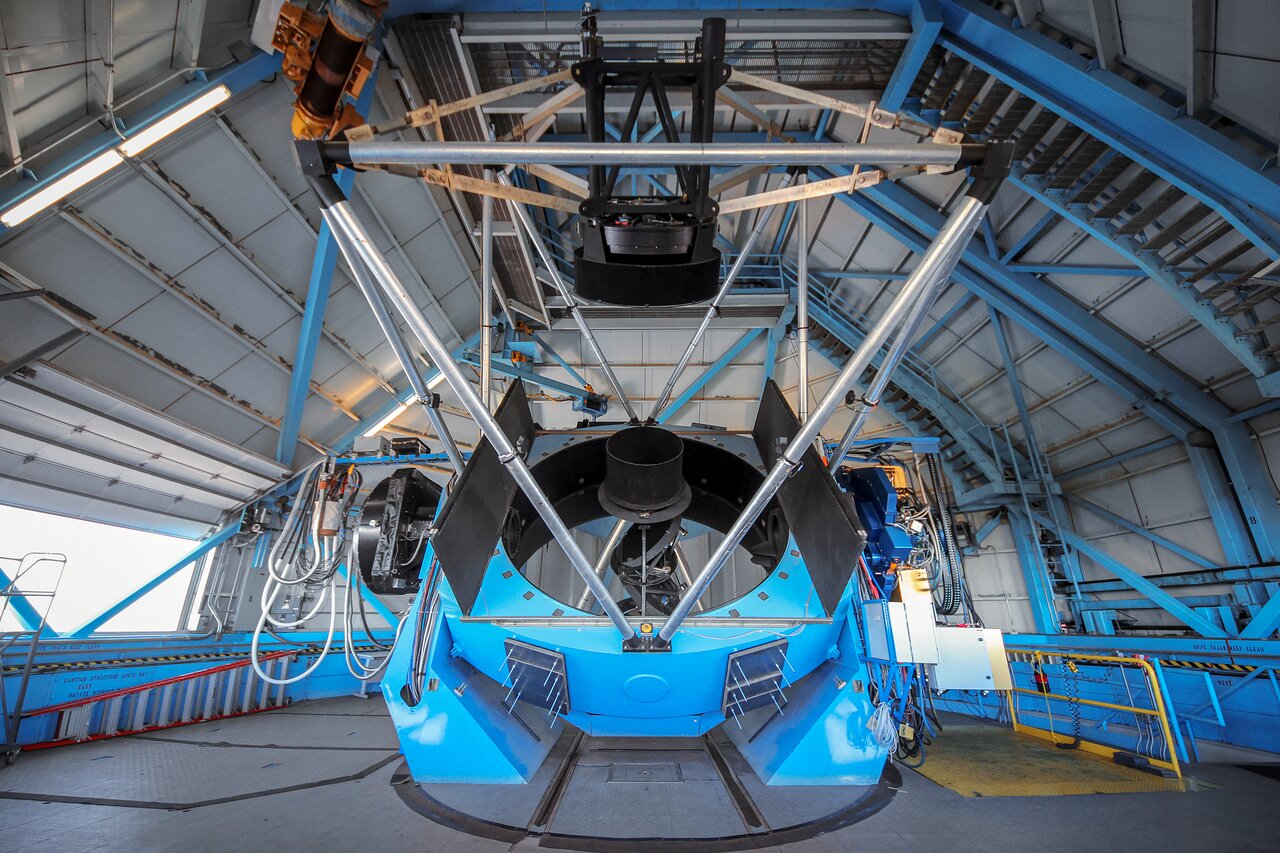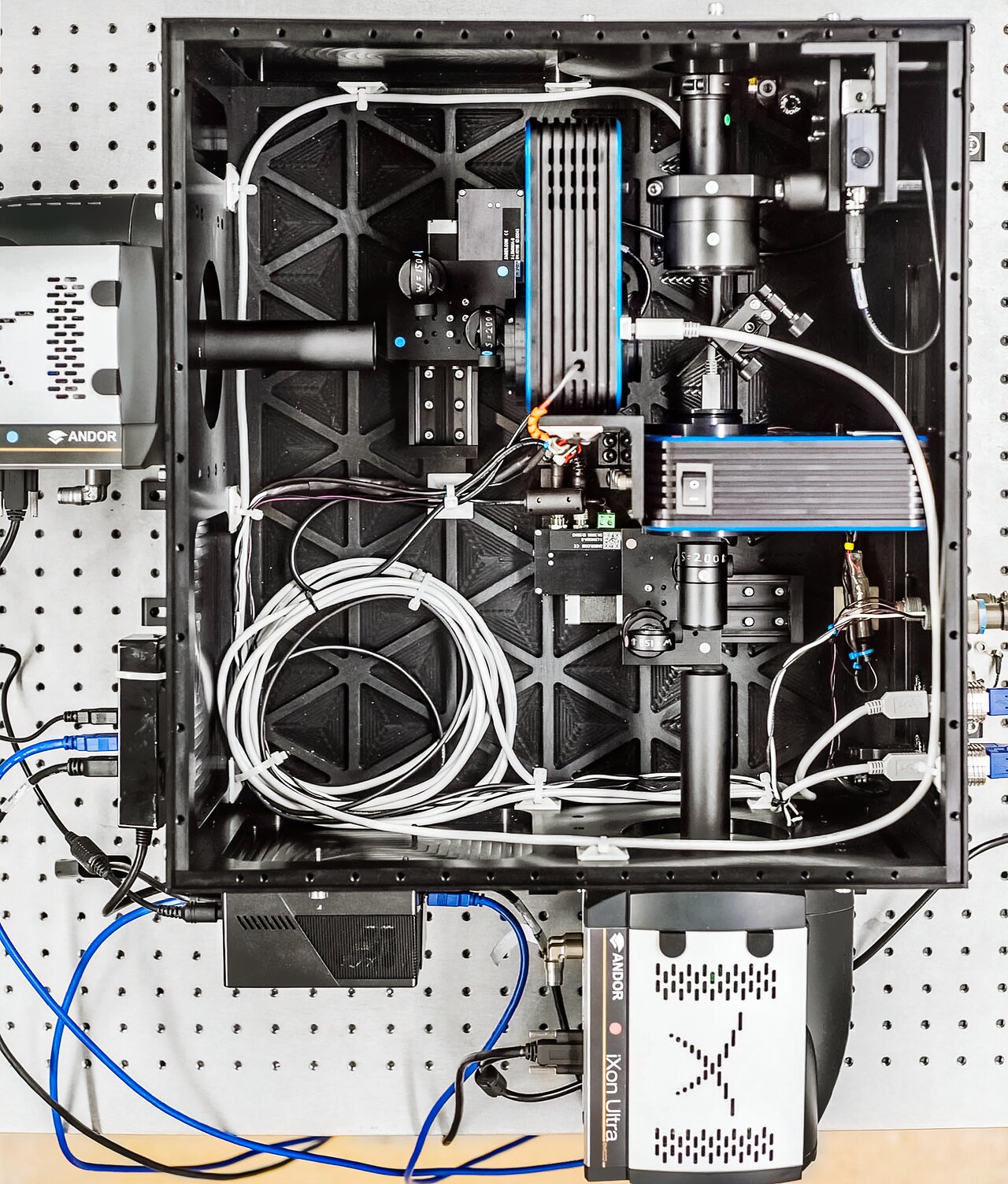NN-EXPLORE Exoplanet and Stellar Speckle Imager (NESSI)
The NN-EXPLORE Exoplanet Stellar Speckle Imager, or NESSI, utilizes two electron-multiplying CCD (EMCCD) cameras. EMCCDs are a variant of silicon-based CCDs that use electron multiplication to significantly elevate the electron signal above the read noise floor so as to maximize sensitivity for low-light imaging. The cameras simultaneously capture speckle images in two wavelength channels split into distinct beams by a dichroic filter. Speckle observations provide resolutions at or near the diffraction limit of the telescope, allowing the detection of faint companions to target stars with relative astrometry and photometric characterization to a contrast level of approximately 5 magnitudes. In addition to speckle interferometry, NESSI may be used as a traditional CCD imager with fast readout speeds. Traditional CCD imaging may be carried out using NESSI’s wide-field mode (80-arcsecond field) or its speckle-mode optics (19-arcsecond field).
Speckle imaging is a high-resolution astronomical imaging technique that uses very short exposure times to freeze out the effects of atmospheric turbulence. This effectively eliminates distortions caused by Earth's atmosphere to enable angular resolutions equal to the theoretically best possible for a given telescope, thereby delivering space-based resolution from the ground.
NESSI is the first in a line of three speckle imagers built at NASA's Ames Research Center for community use at the WIYN 3.5-meter Telescope and the Gemini North telescope and Gemini South telescope (where its sibling instruments 'Alopeke and Zorro are based). Funding for the construction and operation of these instruments was provided by the NASA-NSF Exoplanet Observational Research (NN-EXPLORE) Program. The three instruments are functionally similar and include the capability for wide-field imaging in addition to speckle interferometry.
NESSI at WIYN obtains a spatial resolution of 0.035–0.07 arcseconds, depending on wavelength. This is equivalent to being able to distinguish a pair of car headlights approximately 2/3 of the way across the continental US. In addition to a special set of medium-width bandpass filters optimal for speckle imaging, NESSI is equipped with a standard Sloan filter set.
NESSI is operated primarily in queue mode, where it is most frequently utilized by NN-EXPLORE observing programs. Targets include known or candidate exoplanet host stars to be scrutinized for secondary or other nearly co-aligned stars. It is important to understand how the stars of interest may be crowded by other sources, in order to correct for any extra flux, which can confound the interpretation of observations of these stars, or to understand the role that multiple star systems play in hosting exoplanets. Other types of targets have been the subject of NESSI observing programs. A speckle imaging data reduction pipeline is used to deliver high-level data products back to queue users
NESSI during assembly showing the placement of the two Andor CCDs (EMCCDs), collimation lenses and the filter wheels.
Science Highlights of NESSI
Quick Facts
|
|
NESSI The technical information for astronomical observations is available at the NOIRLab Science webpage. |
|
|
Site |
Kitt Peak National Observatory |
|
Telescope |
WIYN 3.5-meter Telescope |
|
Type |
Imager |
|
Wavelength range |
350–1000 nm |
|
Spatial resolution |
0.0182 arcsec/pixel (Speckle), 0.0813 arcsec/pixel (Wide-Field) |
|
Number of detectors |
Two iXon Ultra 888 Andor EMCCDs |
|
Detector format |
1024 x 1024 pixels (science) plus 1024 x 1024 data transfer array |
|
Detector total size |
1 Megapixel |
|
Spectral resolution |
NA |
|
Field of view |
19 arcseconds Speckle 80 arcseconds Wide-Field |
|
Filters |
9 filters: five wide-band (SDSS u,g,r,i,z) and four medium-band centered at 466, 562, 716 and 832 nm. |
|
Date of first light |
13 October 2016 |
|
Science goals |
NESSI’s primary use has been validation and characterization of exoplanet targets starting with NASA's K2 and Transiting Exoplanet Survey Satellite (TESS) missions as well as exoplanets discovered by the radial velocity method. |
|
Images taken with the instruments |
Reconstructed images of a triple star system observed by NESSI at 562 nm (left panel) and 832 nm (right panel). An artifact of the reconstruction results in mirrored images of the fainter pair to the right side of the bright central star. The images are 4.6 x 4.6 arcseconds. |
|
Images taken with the instruments |
|
|
Images of the instrument |
|
|
Videos of the Instrument |
|
|
Press releases with the instrument |
|



